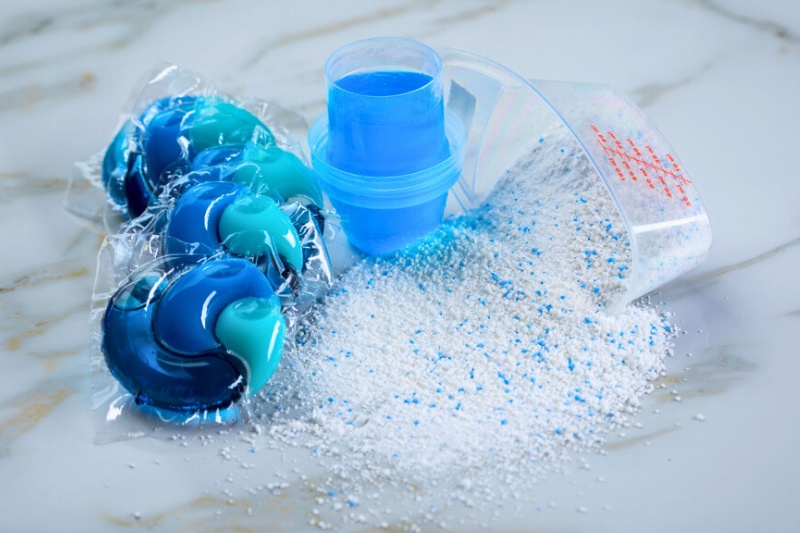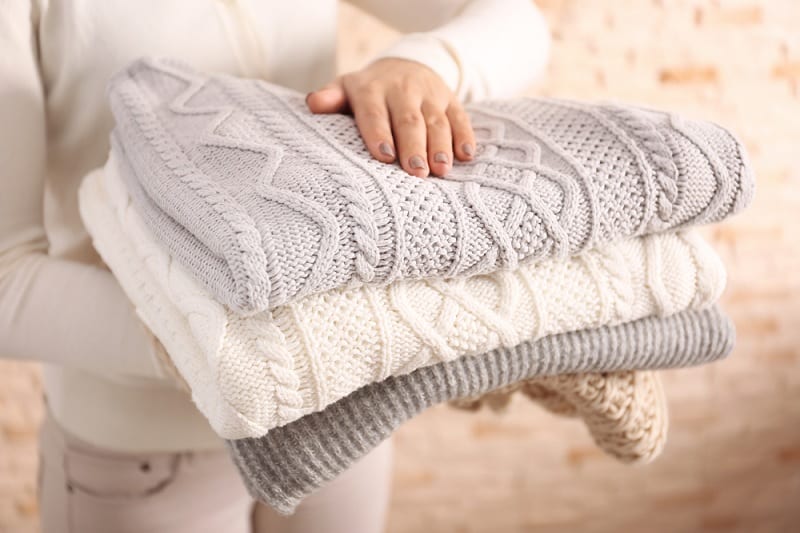It may be tempting to pour the dregs from an old bottle of detergent into a new bottle. But should you actually be mixing two different types of cleaning solutions together?
In short, mixing different kinds of laundry detergent isn’t recommended because there are risks involved with doing this.
Some people will argue that as long as the types of detergent are the same and their key ingredients and concentrations are similar, that it’ll be okay to combine them.
However, it’s better to err on the side of caution and stick to using one detergent at a time. This way, you limit the risks involved and ensure your clothes are cleaned properly and your washing machine continues to work effectively.
Find out more about mixing laundry detergents and the risks involved below.
Is It Okay to Mix Two Types of Laundry Detergent?
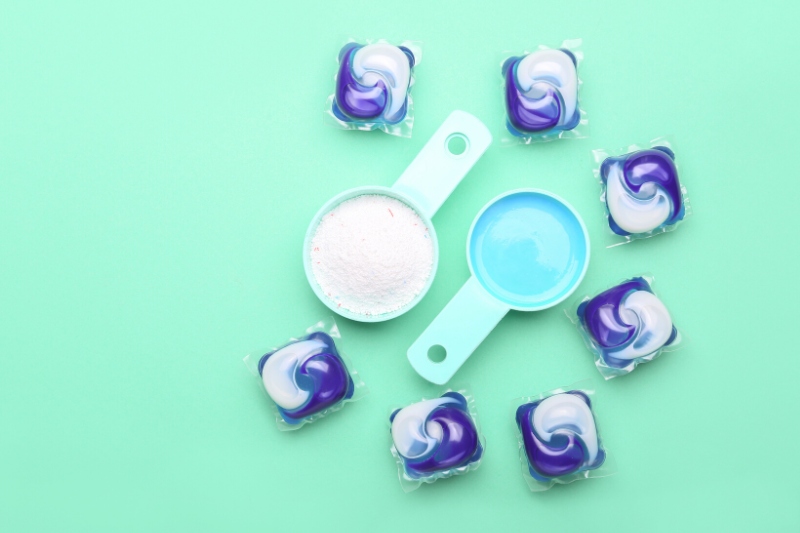
Mixing different kinds of laundry detergent is not recommended. There are many risks involved with mixing detergents together, and it would be better to avoid taking these risks.
To clean your laundry effectively and to reduce potential risks to family members, you should use one detergent at a time.
In addition, you should always follow the instructions on the detergent’s packaging regarding how to use the solution, dose and what not to mix with the cleaner.
Let’s look at specific examples.
What happens if you mix the same detergents together?
If you run out of your regular detergent and rebuy the exact same product, you can use the remnants from the old detergent with the new one.
In this case, the detergents have the same name, are made by the same company, and contain the same ingredients and perfume. There shouldn’t be any adverse effects.
What happens if you mix similar detergents?
Suppose you mix two very similar detergents together. For example, they’re both liquids, have the same concentration and contain the same ingredients but have different fragrances. You may be lucky, and nothing will happen when you run them through the wash.
However, this is not recommended because you can’t guarantee that some minor chemical reaction won’t be triggered! It’s better to stick to using one detergent at a time.
What happens if you mix different detergents?
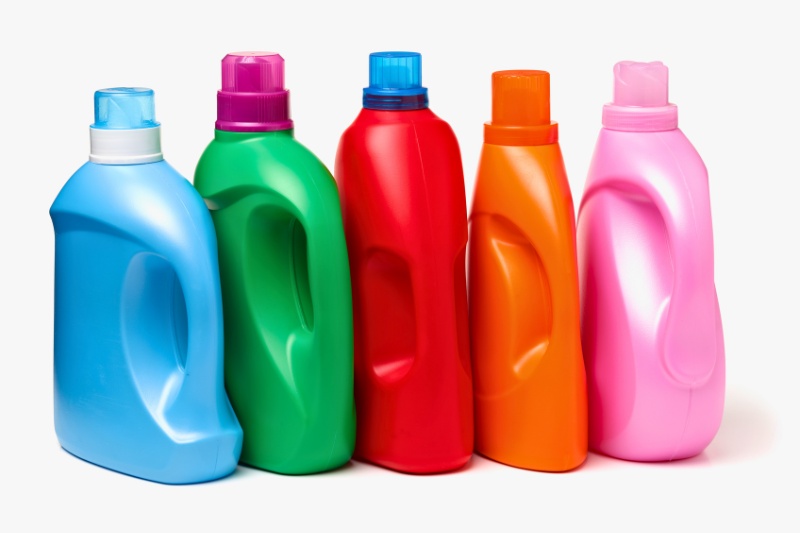
If you mix two different types of detergent together, you can expect the following to happen:
You will trigger a chemical reaction. The ingredients in both detergents will mix and create a byproduct that could harm you and your laundry pile. The effect may be mild and unnoticeable, but something will likely happen.
The detergents may cancel each other out. Different detergents are designed to target and treat specific problems. For example, some cleaners are great at removing stains.
If you mix two types of detergent together, both cleaners may become ineffective at cleaning the laundry. By the end of the cycle, the load may not be clean, could smell foul, and may even be coated in undissolved detergent. Consequently, you’ll have to re-wash the laundry to clean it effectively.
Similarly, one type of detergent could overpower the other. For example, if you used biological detergent with a sensitive skin detergent, the ingredients in the biological detergent would overpower the ingredients in the sensitive version.
If you live with someone with sensitive skin, the powerful ingredients in the biological detergent could cause a nasty flare-up.
In addition, you could end up clogging your washing machine if you used two completely different detergents at the same time.
For example, if you use powder and liquid, the detergents may clump together, forming a gloopy, paste-type consistency. This mixture isn’t likely to clean your laundry effectively, and it won’t dissolve properly in the machine.
Furthermore, by putting two different detergents into your washing machine at once, you may unintentionally overload your appliance with detergent. This will result in excess foam in the washing machine.
Excess foam in a washing machine can cause leaking, drainage problems, disrupted washing cycles, and mechanical failure in the worst case. It’s best to avoid this in the first place.
What’s more, if you mix two different detergents together, you may ruin your garments because you’ve used the wrong combination of ingredients to clean the items.
For example, if you mix a detergent suitable for wools and silks with a biological detergent, the harsher ingredients in the biological cleaner (like enzymes) may discolour or damage the delicate material.
Of course, all of the above could happen, too.
As discussed earlier, some people will advise you that it’s safe to mix two types of detergent. It is, however, often better to take the safe course of action and not mix detergents.
Let’s look at specific examples in more detail.
Mixing biological detergent and non-biological detergent together
Biological and non-biological detergents are created using some different ingredients, they’ve got different concentrations, and they clean stains and fabrics in different ways.
For example, biological detergent contains enzymes that are great for removing stains. It’s often seen as a tougher cleaner because it can easily remove greasy deposits and blemishes.
Non-biological detergent, on the other hand, doesn’t contain these enzymes, so it’s considered by some a gentler cleaner. It’s also better for people with sensitive skin because the chemicals aren’t as aggressive.
If you mix biological and non-biological detergents together, you’ll trigger a chemical reaction, and your clothes will be coated in ingredients found in biological detergent (enzymes), which can trigger a nasty skin reaction for those with sensitive skin.
Mixing different forms of detergent together

The most common detergent forms are powders, liquids, pods, gels and sheets. Each detergent has its own characteristics, benefits and drawbacks. It is, therefore, difficult to mix two of these forms of detergent together.
For example, you can expect to see a ‘caking’ effect if you combine powder and liquid laundry detergent. This is essentially when the detergents clump together in the drawer and inside the washing machine.
Inevitably, this ‘caking’ effect leads to a poor washing cycle, and the clothes end up caked in undissolved detergent.
As noted above, mixing two forms of detergent together may lead to an excess of detergent in the washing machine. This excess can have a negative impact on the washing cycle, the laundry and the washing machine itself.
Plus, the different ingredients and concentrations are bound to cancel each other out, so your clothes won’t be laundered effectively. Or, the stronger detergent will overthrow the weaker one, and its ingredients will dominate the wash.
Mixing the same brands of laundry detergent
If you plan on combining identical detergents together, there shouldn’t be a problem because they’re the exact same products with the same name, ingredients and concentration.
However, if you plan on mixing two different kinds of detergent from the same brand, say gel and powder, avoid doing this.
Although the detergents are made by the same company and may contain similar ingredients, they are physically not the same product.
These products will dissolve differently in the washing machine, and if you were to combine them, a reaction would be triggered, and you could end up with clumpy and redundant detergent.
Note: If you choose to mix two or more detergents together, you do this at your own risk.
Do All Laundry Detergents Work the Same?
In general, most laundry detergents work in a similar way. They all have the same purpose, which is to clean your clothes, remove stains, and ensure the laundry is fragrant.
There are some variations between laundry detergents, namely the form they come in: powder, liquid, pod, gel and sheet.
Their key ingredients can also differ. Some contain enzymes (great for tackling tough stains), while others are better for sensitive skin and delicate materials. Plus, their concentrations and scents can differ.
Overall, they work in the same way. But that doesn’t mean that you can mix them up at random! You should consider the risks involved with combining different detergents and using them in the wash. It’s often better and safer to use one detergent at a time.
Things You Shouldn’t Mix with Laundry Detergent
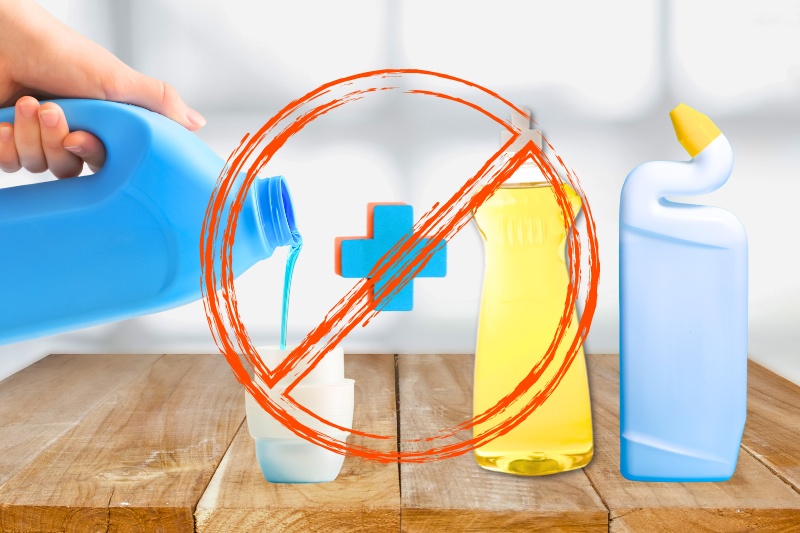
When it comes to laundry detergent, there are multiple substances that you shouldn’t mix with it because they could trigger a chemical reaction or damage your laundry or washing machine.
Here are a few items that you shouldn’t mix with laundry detergent:
- Other household cleaning items. For example, drain unblocker, pesticides and toilet cleaner.
- Washing up liquid. You’ll just end up with loads of suds and hassle!
- Don’t put fabric softener and detergent in the same slot in the washing machine’s drawer. If you mix the two, the fabric softener won’t be used at an optimal time during the cycle, so it’ll effectively become redundant.
- Don’t pour vinegar and detergent into the same slot in the washing machine’s drawer. The two will likely cancel each other out during the cycle. If you want to use vinegar and detergent, put them in separate and designated slots in the dispenser drawer. They will be dispensed at the correct time then.
What Can You Mix with Laundry Detergent?
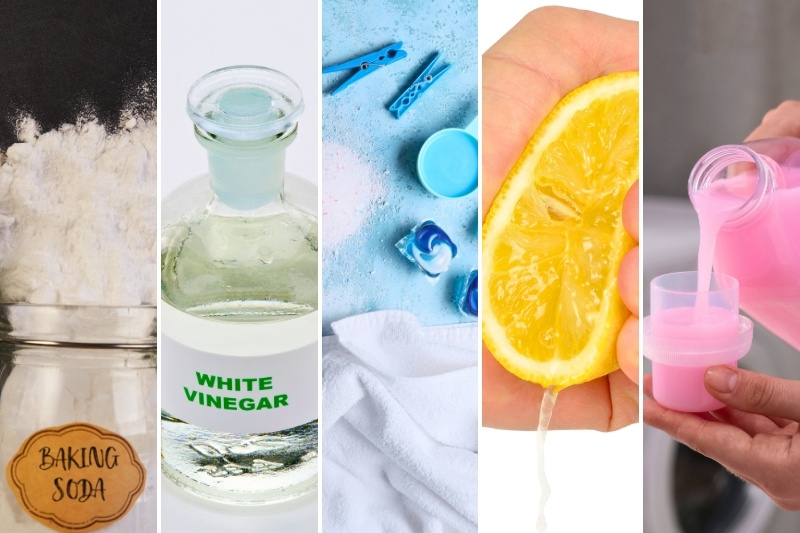
It’s safe to mix the following items with laundry detergent:
- Bicarbonate of soda
- White vinegar (when placed in its own dispensing compartment)
- Fabric softener (when placed in its own dispensing compartment)
- Oxygen-safe bleach (always follow the instructions on the packaging so you use the correct dose)
- Lemon juice
- Water softener
- Pre-treatment stain removers
- Scent boosters

Bethan has a passion for exploring, reading, cooking and gardening! When she’s not creating culinary delights for her family, she’s concocting potions to keep her house clean!
